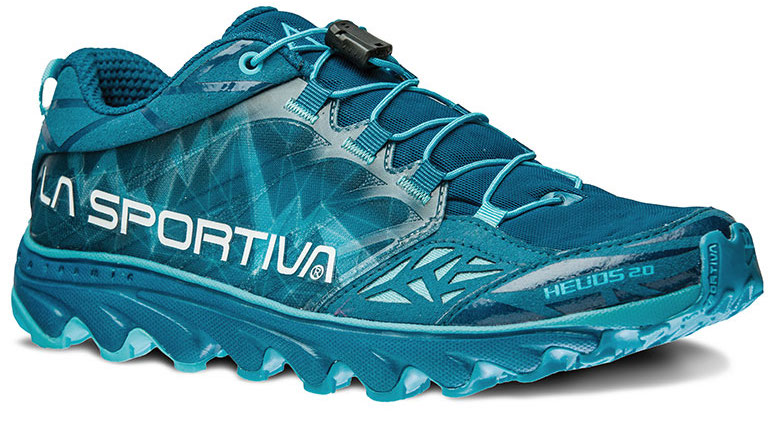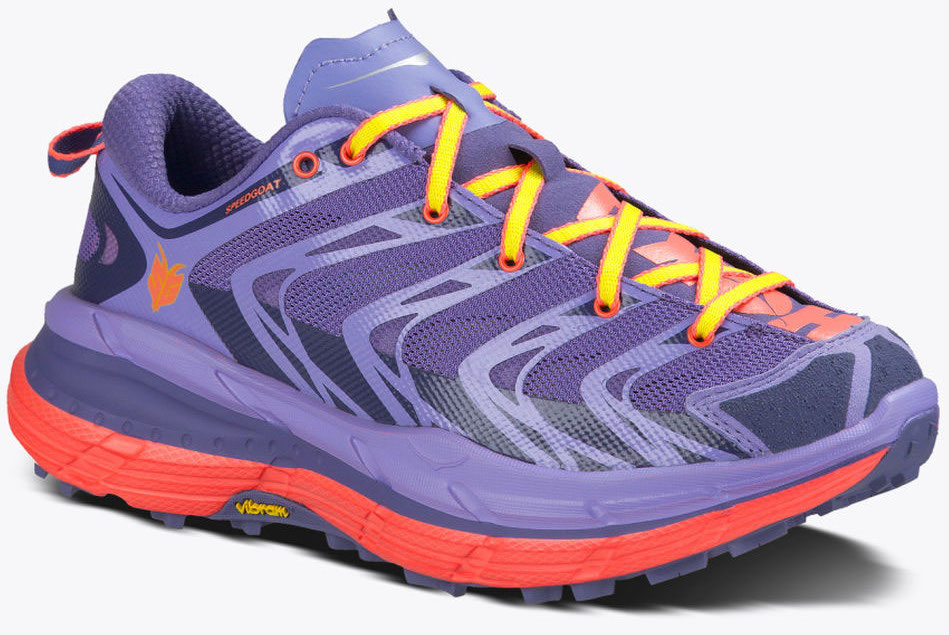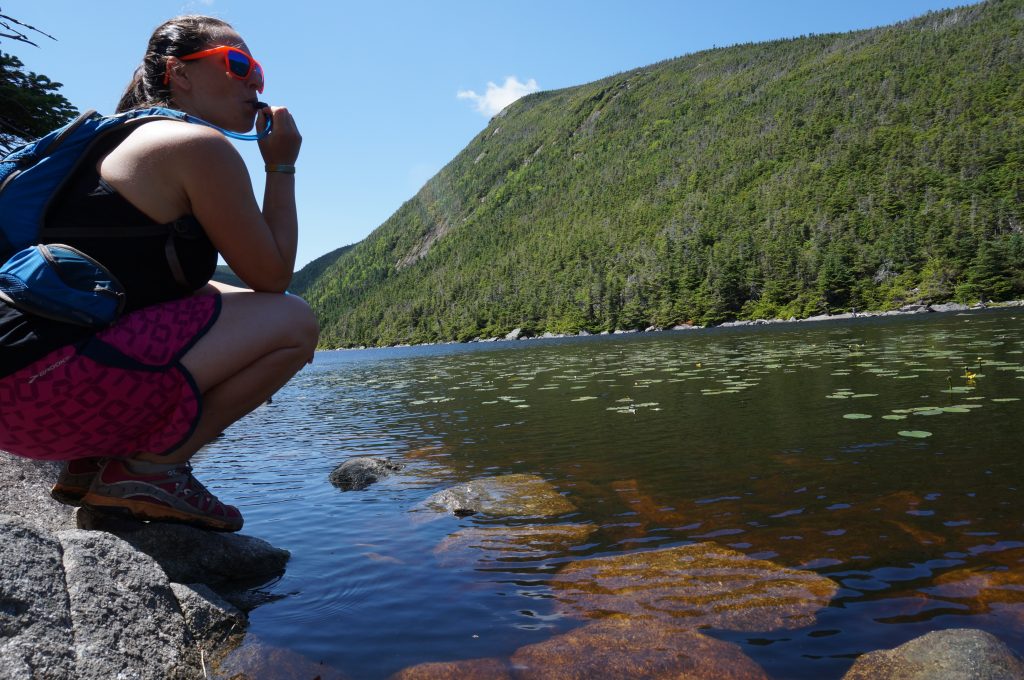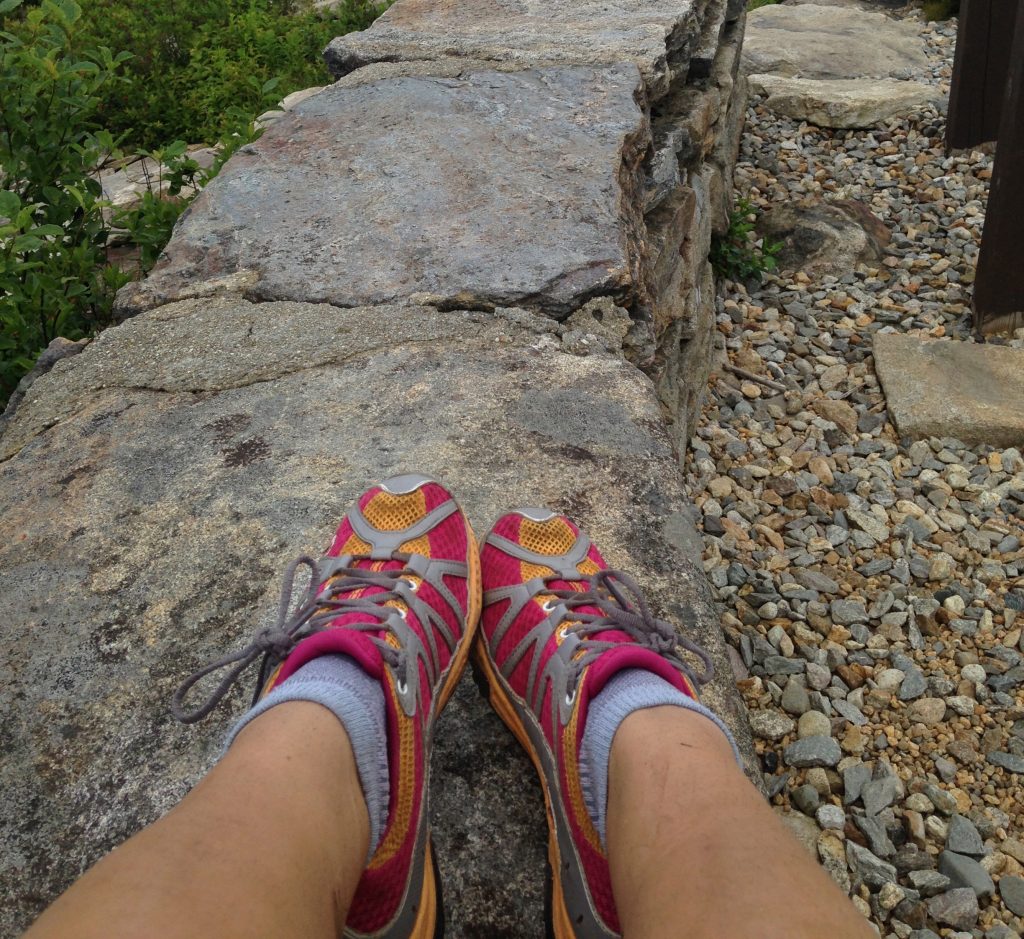In theory, trail running should be one of the simplest sports to understand: Find a nice stretch, lace up your sneakers, and go. However, as the sport has matured, the idea of what constitutes trail running has shifted. In response, the shoes have evolved to accommodate everything from running technique to terrain.
Because of this, shopping for the “right” trail runner can be a daunting task. Deciphering the various classifications and their meanings is essentially akin to learning a new language. And, while I wouldn’t let the lack of the “right” pair keep you from speeding along some dreamy singletrack, having the proper shoes keeps your feet happy, maximizes your performance, and maybe even helps prevent injuries.
The Basics
Trying to categorize trail runners is pretty difficult, as the industry doesn’t have any specific criteria. Further complicating matters, as trail runners adapt to athletes’ growing needs, several characteristics overlap between categories. As such, for many, personal preference dictates use.
For lack of a better system, the heel-toe drop classifies each type. This simple measurement indicates the difference between the height of the heel and the toe box, creating a spectrum that runs from barely-there minimalist shoes, such as the Merrell Vapor Glove, to cloud-like maximalist types, like the Hoka One One Speedgoat.

Barefoot
A zero heel-toe drop, no arch support, no cushioning, and a wide toe box identify barefoot trail runners. Outdoors, this basic design offers your feet slight protection from common hazards like thorns and sharp rocks. In other words, they’re only slightly better than actually being barefoot.
The philosophy behind barefoot shoes is, over the last hundred-thousand years or so, the human body evolved to run without big, supportive footwear. Barefoot runners argue that today’s traditional running shoes have altered the way we move—by encouraging landing on our heels instead of on our toes. As a result, those in this camp have turned to shoes like the Vibram FiveFingers Classic Multisport.
Barefoot runners additionally believe that this biomechanical shift in stride has not only made us less efficient, but has also increased our injury risks. Those using this technique will tell you that the lack of a thick, protective sole and a layer of cushioning between them and the ground makes them feel more connected to the trail. In turn, the design supposedly results in more comfort when you run technical terrain.

Minimalist
Minimalist shoes are often referred to as, and are mistaken for, barefoot shoes. This confusion exemplifies why, in recent years, classifying trail runners has become convoluted. The dividing line is, people who like the idea of barefoot running but want more support and cushioning opt for a minimalist pair.
These shoes commonly feature some heel-toe drop, but the ramp (or drop between the heel and toe) is, well, minimal. As well, they combine the feeling of a barefoot shoe with some of the more traditional features. Like barefoot trail runners, minimalist styles encourage landing on the forefoot rather than the heels.
Minimalist shoes, such as the La Sportiva Helios 2.0, are perfect for East Coast trail runners who are looking to find their natural stride but are concerned about the trails’ many obstacles. Specifically, a more protective sole and a small amount of cushioning can be a welcome barrier against sharp rocks, pointy acorns, and rough roots.
Although I am not a minimalist devotee, I love these shoes for short runs on moderate terrain when I’m trying to be fast. Sadly, being a bigger person and not the smoothest of striders, I have to ditch my pair for longer distance runs.

Traditional
Traditional trail runners constitute the majority of the shoes at your local Eastern Mountain Sports. As the name implies, these are constructed in a similar manner to those you’ve been wearing your entire life. These types, like the La Sportiva Wildcat 3.0 (one of my all-time favorites), have more padding in the heel than in the forefoot, which creates a noticeable ramp and encourages a heel-first stride.
Perhaps the best case I can make for traditional trail runners is, to quote the old saying, “If it ain’t broke, don’t fix it.” Many of us, myself included, have been running without issue in this type since our first steps, and changing shoes, along with technique, could be inviting disaster.
Because of this, I log most of my miles in traditional trail runners. Although barefoot and minimalist runners may feel more connected, I have found that, thanks to the additional cushioning, I can run over objects they have to avoid.

Maximalist
Differing from the three aforementioned categories, maximalist shoes don’t emphasize heel-toe drop. Rather, they shift the focus to cushioning. Here, the incredible amount of material between the sole and footbed clearly identifies this style. Just check out the Hoka One One Speedgoat to see what I mean.
If the idea of bounding down mountain trails while feeling like you’re hopping along clouds is appealing, these shoes might be for you. Maximalist trail runners believe that the additional cushioning is easier on their joints and reduces fatigue, helping to prevent injuries and keep them running longer.
The negative, however, can be a loss of ground-feel. And, in my experience, the additional height may reduce your control when you’re running technical trails or steep downhills.

Other Considerations
Of course, this is just a simple breakdown of today’s trail running options. You still need to consider a handful of other factors when picking your next pair, such as:
Waterproofing
In my experience, a non-waterproof trail runner is ideal for about 90 percent of my journeys. They’re cooler, allow your feet to breathe better, and dry quickly when they get wet. The only time I choose a waterproof model, like the Brooks Cascadia 11 GTX (the waterproof version of an all-time favorite), is for colder runs in early spring and late fall.
Tread
When thinking about the type of tread you need, keep in mind a few things. Most importantly, have a clear picture of which type of trail running you envision yourself doing.
For instance, runners striving for the mountains will want a shoe like the Salomon Speedcross 4, a style with a more aggressive tread and deeper lugs. On the other hand, people who might be running some roads on the way or who plan to do less-technical terrain like rail trails will find a less-aggressive tread, such as those on the Salomon X-Mission 3, is ideal.
Foam or Rock Plate
Most trail running shoes, barefoot runners excluded, offer some protection against hazards by incorporating foam or a rock plate into the midsole. Those that use the former as a means of protection benefit from more cushioning and shock absorption, while trail runners utilizing a rock plate have better trail feel and more precise foot placement.

While finding a type of shoe can be daunting, know that the only wrong choice is not getting off the road and onto the trail for your next run. Over the years, I have experimented with all kinds of trail runners, and even though I’ve settled on a traditional pair, I still incorporate minimalist shoes to work on my stride and exercise under-used muscles. And, I think about buying a pair of Hokas every shift I work.
Tim Peck
A former child model, Tim spent a portion of his youth gracing the pages of Sunday paper advertisements for many now-defunct department stores. Living responsibility/rent-free with his parents into his thirties, Tim pursued climbing, skiing, and biking while accumulating an impressive amount of time in the mountains (and gear). Now almost grown up, he lives in central New Hampshire with his wife, Australian Shepherd, and cat. Relentlessly pursuing the dream, Tim's modest life ambitions are to ski all 12 months of the year, climb 5.12, and live in a van.
Related Posts
1 Comment
Comments are closed.





Nice article Tim. I think you should have put a picture of your shoes in it though, then they could see what you actually buy, OH not enough room for the picture???? You keep running, and make sure you have the right shoes we don’t want any injuries. And keep writing 🙂 Your #1 fan